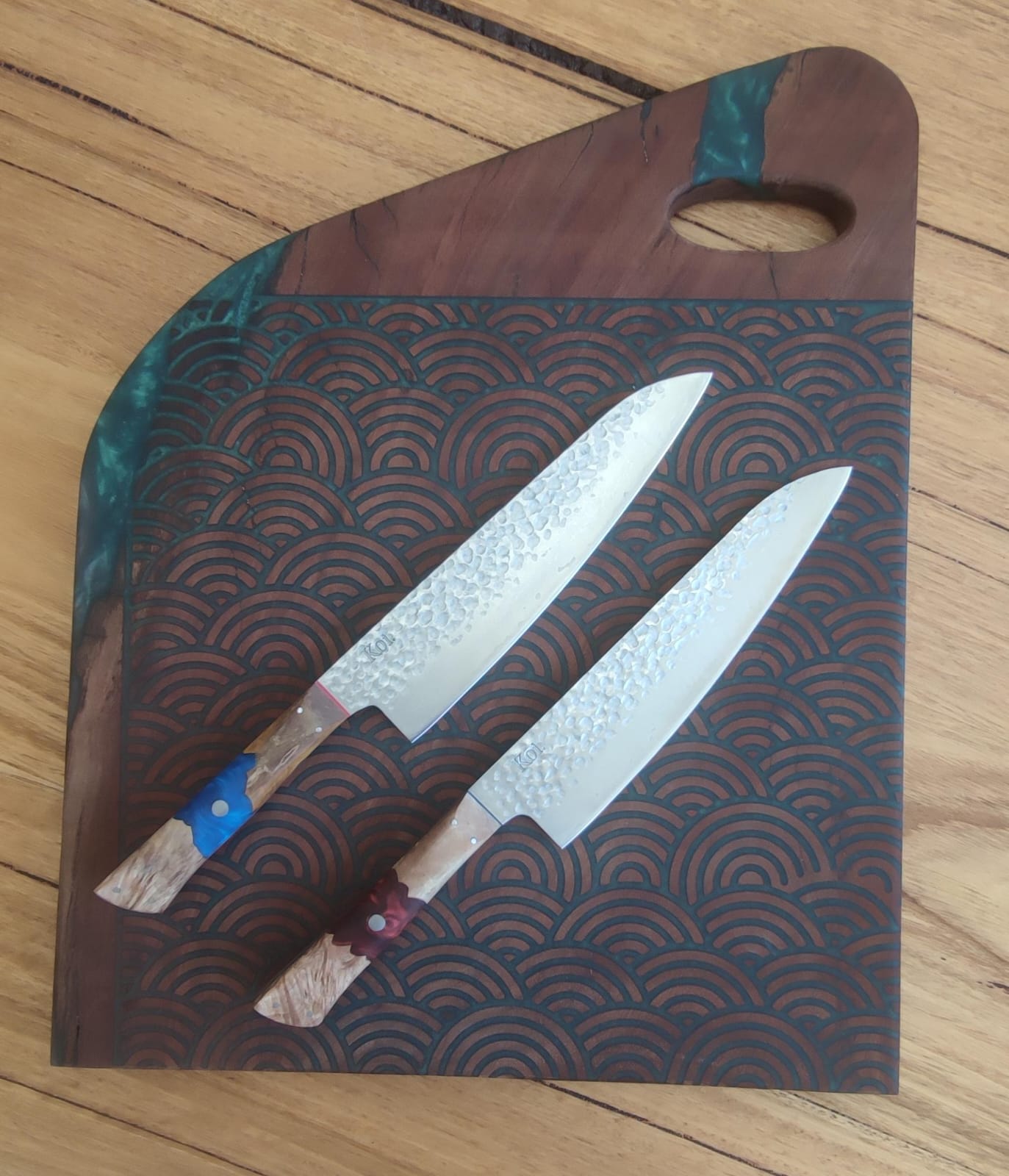
Every good meal starts with a good cut. It is not a stretch to say that the knife and cut are the very foundation of great cooking. Just think what our dishes would look like if they weren’t cut, chopped or diced into small pieces.
In almost every culture, the knife cut has evolved into something of an art. Great cooking requires the right sets of ingredients, a creative flair, a good knife and of course, a great cutting technique. The knife cut is central in all of this. Yet before you can make all those minces, dices, juliennes, rondelles, bias cuts and chiffonades that will make your dish a wonder, you’ve got to master and perfect your knife skills. Great knife skills are an integral part of great cooking.
The journey to perfecting your knife skills of course begins with having the right knife in hand depending on the dish you have in mind. But a good knife is useless without a great technique. Fortunately for many aspiring cooks, it doesn’t take much to master a knife skill. However, some knife skills are more complex and involve a steeper learning curve than others. Some chefs spend years just to a master a couple of knife skills. However, with the right knowledge, dedication and practice, you can begin perfecting your knife skills today to match with some of the best displayed by your favorite professional chefs.
Here are a few simple tips on how you can start improving your knife skills today: -
Pick the Right Knife
Every cutting technique goes with a corresponding knife that is best suited for that particular technique. For example, if you are looking to perfect your slicing technique, you will need to get a good slicer such as the yanagiba or the sujihiki knife. If you are planning to make chiffonades, rondelles or small dices, you must be able to determine the best knife type that will be best suited for the task.

Before you begin perfecting your knife skills, you have to match every knife to the right application or match the job to the knife.
It is not just the type of the knife that matters. You must also consider factors such as the weight and length of the blade. All of these will have a bearing on your technique and efficiency on every cutting task. If you will be doing delicate cuts, you need a thinner, smaller and lighter kitchen knife that is nimble enough to maneuver around precision cuts.
If you will be chopping your vegetables, you will need a chef’s knife that is at least 8 to 10 inches long. However, for small and delicate precision cutting jobs, a much smaller paring knife will suffice.
Learn the Basic Knife Cuts
What is a chiffonade? What about coring, cubing, mincing, dicing or slicing a julienne?
If you are going to perfect your knife skills, you must start by mastering all the important basic knife cuts.
If you can master most of these basic of knife cuts, it will be easier for you to apply this knowledge in making more complex cuts. Mastering the basic knife skills also increases your ‘knife IQ’. You will be able to instantly figure out what knife to use where based on your experience doing the many basic knife cuts.
Mastering the basic knife skills is also good for your efficiency as it enables you to glide through different types of ingredients with speed and efficiency.
To chiffonade your ingredients entails slicing leafy vegetables into extremely thin strips. This is done by rolling the leafy vegetables into a cigar and then finely slicing the ends of the rolled vegetable. To dice means cutting your vegetables into evenly sized cubes. You might also be instructed to julienne your vegetables which involves slicing vegetables such as cucumbers and carrots to form matchstick-like shapes. Julienne are thin and long strips that have straight ends and are commonly used in stir-fries, sandwiches and salads.
Dicing is also a common cut. It is similar to cubing but in this case, you will chop your vegetables to form a very small dice that can be used in chunky soups or pastry fillings. The dices can be small, medium-sized or large.
Mincing is commonly used on onions and garlic. In this case, the vegetable must be chopped into extremely fine pieces. When it comes to mincing, you can go as finely as your knife and skill can permit.
Scoring isn’t a very difficult knife cut. It simply entails partially cutting through the produce in lines. You can also score your food in order to help with the rendering of fat or to create the spaces for your marinades.
These are just a few of the many knife cuts that you need to familiarize yourself with.
Learn how to grip the knife properly
Holding the knife properly is one of the most important knife skills to master. If the knife is not gripped well, you are either going to injure yourself more often or you will not be cutting efficiently. Grip the knife in such a way that you will feel comfortable wielding the knife and you are able to cut with relative ease.
For maximum comfort and control of the knife, you should grip the knife on its handle with your thumb and the index finger holding the heel of the blade and then wrap your fingers around the handle of the knife. This knife holding technique will give you a firmer grip and control, two of the most important factors when developing your knife technique.
Always make sure that you are holding the knife the right way before you start using it to cut, slice or chop.
Learn to Focus When Making a Cut
Cooking is an art. Some may find the repetitive nature of this ‘art’ a little monotonous, even cumbersome and the amount of attention that you give the activity begins to suffer. Whenever there is an attention deficit in your cooking, there is bound to be a quality deficit, too. This is particularly true when you are developing your knife skills. You need to watch and concentrate as you are making the knife cut so that you can determine where you are falling short and make the necessary adjustments.
Lack of concentration might also result in you hurting yourself, particularly when you are working with the ultra-sharp and high-performance Japanese kitchen knives.
Approach every cutting task as the most important thing in the world at that moment. Do not make it an overly mechanical activity. Think about what you want to do and the best way to do it. Think about how big or small you want the pieces to be and what shapes you want to achieve. With great concentration, your knife technique will get better and better by the day.




